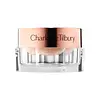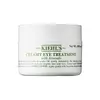What's inside
What's inside
 Key Ingredients
Key Ingredients

 Benefits
Benefits

 Concerns
Concerns

 Ingredients Side-by-side
Ingredients Side-by-side

Water
Skin ConditioningCaprylic/Capric Triglyceride
MaskingButylene Glycol
HumectantPolysorbate 60
EmulsifyingOlus Oil
EmollientPEG-7 Glyceryl Cocoate
EmulsifyingGlycerin
HumectantButyrospermum Parkii Butter
Skin ConditioningPEG-8
HumectantEthylhexyl Stearate
EmollientDicaprylyl Ether
EmollientSorbitan Stearate
EmulsifyingHydroxyethyl Acrylate/Sodium Acryloyldimethyl Taurate Copolymer
Emulsion StabilisingOlive Oil PEG-7 Esters
EmollientPhenoxyethanol
PreservativeSaccharide Isomerate
HumectantC12-16 Alcohols
EmollientCera Alba
EmollientGlyceryl Stearate
EmollientHydrogenated Castor Oil
EmollientSqualane
EmollientEthylhexylglycerin
Skin ConditioningChlorphenesin
AntimicrobialHydrogenated Lecithin
EmulsifyingHydrolyzed Rice Protein
Skin ConditioningPalmitic Acid
EmollientXanthan Gum
EmulsifyingChondrus Crispus Extract
Skin ConditioningDisodium EDTA
Helianthus Annuus Seed Oil
EmollientPolysorbate 20
EmulsifyingSorbitan Isostearate
EmulsifyingSodium Hydroxide
BufferingGlycine Soja Protein
EmulsifyingSuperoxide Dismutase
AntioxidantCitric Acid
BufferingHydroxypropyl Cyclodextrin
MaskingTocopherol
AntioxidantSodium Citrate
BufferingSodium Benzoate
MaskingSodium PCA
HumectantAscorbyl Palmitate
AntioxidantDaphne Odora Callus Extract
Skin ProtectingSodium Dextran Sulfate
Gel FormingNicotiana Sylvestris Leaf Cell Culture
Skin ConditioningAluminum Hydroxide
EmollientRetinol
Skin ConditioningPlumeria Rubra Flower Extract
Skin ConditioningBorago Officinalis Seed Oil
EmollientTocopheryl Acetate
AntioxidantAscorbic Acid
AntioxidantLecithin
EmollientPotassium Sorbate
PreservativeRetinyl Palmitate
Skin ConditioningAscorbyl Tetraisopalmitate
AntioxidantCI 77891
Cosmetic ColorantIron Oxides
Water, Caprylic/Capric Triglyceride, Butylene Glycol, Polysorbate 60, Olus Oil, PEG-7 Glyceryl Cocoate, Glycerin, Butyrospermum Parkii Butter, PEG-8, Ethylhexyl Stearate, Dicaprylyl Ether, Sorbitan Stearate, Hydroxyethyl Acrylate/Sodium Acryloyldimethyl Taurate Copolymer, Olive Oil PEG-7 Esters, Phenoxyethanol, Saccharide Isomerate, C12-16 Alcohols, Cera Alba, Glyceryl Stearate, Hydrogenated Castor Oil, Squalane, Ethylhexylglycerin, Chlorphenesin, Hydrogenated Lecithin, Hydrolyzed Rice Protein, Palmitic Acid, Xanthan Gum, Chondrus Crispus Extract, Disodium EDTA, Helianthus Annuus Seed Oil, Polysorbate 20, Sorbitan Isostearate, Sodium Hydroxide, Glycine Soja Protein, Superoxide Dismutase, Citric Acid, Hydroxypropyl Cyclodextrin, Tocopherol, Sodium Citrate, Sodium Benzoate, Sodium PCA, Ascorbyl Palmitate, Daphne Odora Callus Extract, Sodium Dextran Sulfate, Nicotiana Sylvestris Leaf Cell Culture, Aluminum Hydroxide, Retinol, Plumeria Rubra Flower Extract, Borago Officinalis Seed Oil, Tocopheryl Acetate, Ascorbic Acid, Lecithin, Potassium Sorbate, Retinyl Palmitate, Ascorbyl Tetraisopalmitate, CI 77891, Iron Oxides
Water
Skin ConditioningButyrospermum Parkii Butter
Skin ConditioningButylene Glycol
HumectantTridecyl Stearate
EmollientPEG-30 Dipolyhydroxystearate
EmulsifyingIsodecyl Salicylate
Skin ConditioningTridecyl Trimellitate
EmollientPersea Gratissima Oil
Skin ConditioningIsocetyl Stearoyl Stearate
EmollientPropylene Glycol
HumectantDipentaerythrityl Hexacaprylate/Hexacaprate
EmulsifyingSorbitan Sesquioleate
EmulsifyingMagnesium Sulfate
Hydrogenated Castor Oil
EmollientSodium PCA
HumectantPhenoxyethanol
PreservativeChlorphenesin
AntimicrobialHydrogenated Jojoba Oil
AbrasiveP-Anisic Acid
MaskingTocopheryl Acetate
AntioxidantIsopropyl Palmitate
EmollientDisodium EDTA
Copper PCA
HumectantHelianthus Annuus Seed Oil
EmollientCI 40800
Cosmetic ColorantCitric Acid
BufferingWater, Butyrospermum Parkii Butter, Butylene Glycol, Tridecyl Stearate, PEG-30 Dipolyhydroxystearate, Isodecyl Salicylate, Tridecyl Trimellitate, Persea Gratissima Oil, Isocetyl Stearoyl Stearate, Propylene Glycol, Dipentaerythrityl Hexacaprylate/Hexacaprate, Sorbitan Sesquioleate, Magnesium Sulfate, Hydrogenated Castor Oil, Sodium PCA, Phenoxyethanol, Chlorphenesin, Hydrogenated Jojoba Oil, P-Anisic Acid, Tocopheryl Acetate, Isopropyl Palmitate, Disodium EDTA, Copper PCA, Helianthus Annuus Seed Oil, CI 40800, Citric Acid
 Reviews
Reviews

Ingredients Explained
These ingredients are found in both products.
Ingredients higher up in an ingredient list are typically present in a larger amount.
Butylene Glycol (or BG) is used within cosmetic products for a few different reasons:
Overall, Butylene Glycol is a safe and well-rounded ingredient that works well with other ingredients.
Though this ingredient works well with most skin types, some people with sensitive skin may experience a reaction such as allergic rashes, closed comedones, or itchiness.
Learn more about Butylene GlycolThis ingredient is also known as shea butter. It is an effective skin hydrator and emollient.
Emollients help soothe and soften your skin. It does this by creating a protective film on your skin. This barrier helps trap moisture and keeps your skin hydrated. Emollients may be effective at treating dry or itchy skin.
Shea butter is rich in antioxidants. Antioxidants help fight free-radicals, or molecules that may harm the body. It is also full of fatty acids including stearic acid and linoleic acid. These acids help replenish the skin and keep skin moisturized.
While Shea Butter has an SPF rating of about 3-4, it is not a sunscreen replacement.
Shea butter may not be fungal acne safe. We recommend speaking with a professional if you have any concerns.
Learn more about Butyrospermum Parkii ButterChlorphenesin is a synthetic preservative. It helps protect a product against bacteria in order to extend shelf life. In most cases, Chlorphenesin is paired with other preservatives such as phenoxyethanol and caprylyl glycol.
Chlorphenesin is a biocide. This means it is able to help fight the microorganisms on our skin. It is also able to fight odor-releasing bacteria.
Chlorphenesin is soluble in both water and glycerin.
Studies show Chlorphenesin is easily absorbed by our skin. You should speak with a skincare professional if you have concerns about using Chlorphenesin.
Learn more about ChlorphenesinCitric Acid is an alpha hydroxy acid (AHA) naturally found in citrus fruits like oranges, lemons, and limes.
Like other AHAs, citric acid can exfoliate skin by breaking down the bonds that hold dead skin cells together. This helps reveal smoother and brighter skin underneath.
However, this exfoliating effect only happens at high concentrations (20%) which can be hard to find in cosmetic products.
Due to this, citric acid is usually included in small amounts as a pH adjuster. This helps keep products slightly more acidic and compatible with skin's natural pH.
In skincare formulas, citric acid can:
While it can provide some skin benefits, research shows lactic acid and glycolic acid are generally more effective and less irritating exfoliants.
Most citric acid used in skincare today is made by fermenting sugars (usually from molasses). This synthetic version is identical to the natural citrus form but easier to stabilize and use in formulations.
Read more about some other popular AHA's here:
Learn more about Citric AcidDisodium EDTA plays a role in making products more stable by aiding other preservatives.
It is a chelating agent, meaning it neutralizes metal ions that may be found in a product.
Disodium EDTA is a salt of edetic acid and is found to be safe in cosmetic ingredients.
Learn more about Disodium EDTAHelianthus Annuus Seed Oil is the oil derived from the seeds of a Sunflower. Sunflower seed oil is non-fragrant. It is an emollient, meaning it helps to soften the skin.
Sunflower seed oil contains many fatty acids. The fatty acids found in sunflower seeds include (from highest amount to least): linoleic acid, myristic acid, palmitic acid, stearic acid, arachidic acid, oleic acid, and linolenic acid.
These fatty acids help the skin create ceramides. Ceramides play a role in repairing the skin barrier.
Helianthus Annuus Seed Oil helps moisturize the skin. This in turn helps the skin look more rejuvenated and smoother.
Sunflowers are rich in vitamin E.
Historians believe Indigenous cultures of North America domesticated sunflowers before corn. Thus they relied on sunflower oil for a variety of uses. One such use is moisturizing skin and hair.
Sunflower seed oil may not be fungal acne safe. We recommend speaking with a professional if you have any concerns.
Learn more about Helianthus Annuus Seed OilHydrogenated Castor Oil is created by adding hydrogen to castor oil. This helps stabilize the castor oil and raises the melting point. At room temperature, hydrogenated castor oil is solid.
Castor Oil helps moisturize the skin. It is rich in a fatty acid called ricinoleic acid. This fatty acid helps prevent moisture loss on the skin. This helps keep your skin soft and hydrated. Ricinoleic acid also has anti-inflammatory and pain reducing properties.
As a wax-like substance, Hydrogenated Castor Oil acts as an emollient. Emollients help keep your skin stay soft and smooth by creating a barrier. This barrier helps trap moisture.
Hydrogenated Castor Oil may not be fungal-acne safe. We recommend speaking with a professional.
Learn more about Hydrogenated Castor OilPhenoxyethanol is a preservative that has germicide, antimicrobial, and aromatic properties. Studies show that phenoxyethanol can prevent microbial growth. By itself, it has a scent that is similar to that of a rose.
It's often used in formulations along with Caprylyl Glycol to preserve the shelf life of products.
Sodium PCA is the sodium salt of pyroglutamic acid. It is naturally occurring in our skin's natural moisturizing factors where it works to maintain hydration.
The PCA stands for pyrrolidone carboxylic acid, a natural amino acid derivative.
This ingredient has skin conditioning, anti-inflammatory, and humectant properties. Humectants help hydrate your skin by drawing moisture from the air. This helps keep your skin moisturized.
Learn more about Sodium PCATocopheryl Acetate is AKA Vitamin E. It is an antioxidant and protects your skin from free radicals. Free radicals damage the skin by breaking down collagen.
One study found using Tocopheryl Acetate with Vitamin C decreased the number of sunburned cells.
Tocopheryl Acetate is commonly found in both skincare and dietary supplements.
Learn more about Tocopheryl AcetateWater. It's the most common cosmetic ingredient of all. You'll usually see it at the top of ingredient lists, meaning that it makes up the largest part of the product.
So why is it so popular? Water most often acts as a solvent - this means that it helps dissolve other ingredients into the formulation.
You'll also recognize water as that liquid we all need to stay alive. If you see this, drink a glass of water. Stay hydrated!
Learn more about Water